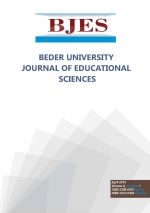
Teaching English vocabulary to Albanian students and the importance of the semantic fields in the process of expanding it.
Abstract
Every language has its own semantic, phonologic, grammatical structure. When you try to make a comparison between the two languages, you know that they do not fully correspond in none of the structures mentioned above. Every language among the other things relects the culture of a certain society, which the same as the language, is different in different countries. So it is the case with the English and the Albanian language. These two languages do not have any resemblance with each-other. The scholar Lyons would say that we have to deal with non isomorphic languages, due to the semantic structure, which is different. This phenomenon should be taken into account during the process of teaching, in our case of the English language. This paper aims at a comparison of the semantic ields of the two languages, based on the semantic ield theory. It is more eficient if the comparison is made between fields and not between speciic lexemes. Hence, this comparison can lead to a clear picture and a better understanding of the correlation, contrast of these two languages. In this paper it is aimed a research which examines the basic concept of semantic ields, theoretical and practical foundations and implications of semantic fields as a method for creative foreign language teaching, especially in teaching English as a foreign language toAlbanian students at Tirana University and Beder University. Current research has found that having a knowledge in semantic ields makes it easier and helps students develop their conceptual understandings. It has been assessed that semantic ields constitute major lexical patterns in the vocabulary of a language and as such they are regarded as part of the native speaker’s lexical competence. It has also been argued that learning a foreign language vocabulary entails learning, among other things, the meanings of lexical items in ields and the sense relations in terms of which these ields are structured. “ Rudska et al. (1981a). Teaching new vocabulary through the use of semantic ields gives the learner the conidence and a native like competence in the language that they are learning. Learning outcomes and indings are often shown through descriptions of design interventions that have taken place in ordinary classrooms. In this research, attention has been paid if the use of semantic ield analysis in the teaching of lexis in foreign language situations with respect to the language skills for which the EFL learners are learning English is effective. The use of new creative methods,
diverse experiences of individual students within FL classes and what they take away from participation in such classes would make the circle complete and satisfactory.
Keywords
Semantic field; Lexical pattern; Expand and enrich the vocabulary
Authors
Lediana BESHAJ
Download Article

This work is licensed under a Creative Commons Attribution 4.0 International License.
Warning: mysql_free_result() expects parameter 1 to be resource, null given in /var/www/journals/bjes.beder.edu.al/article.php on line 45